Tanglang Mountain: Walking through the evolutionary tree of biodiversity
editorial comment/note
With the formal completion of the demonstration section of Chaguang-Tanglangshan hiking trail in Nanshan District, it marks the completion of the first mountain and sea corridor in Shenzhen-Tanglangshan-Dashahe-Shenzhen Bay Mountain and Sea Corridor.
This is the first project that landed after the Master Plan and Three-year Action Plan of Shenzhen Park City Construction (2022-2024) was reviewed and approved by the Municipal Urban Planning Commission. With the completion of this 13-kilometer-long line, a beautiful picture of Shenzhen, a park with mountains and seas, has been formally integrated into the daily life of Shenzhen people, and citizens can enjoy the fun of trails where mountains, rivers, seas and cities are intertwined in the downtown area of Shenzhen.
For ordinary citizens, what are the highlights of this mountain and sea corridor and what are the potential "online celebrity punch points"? Recently, the late-night report group summarized a walking strategy through field interviews, which will be serialized in three days from today.
This interview was helped by many professionals in the field of wildlife protection and nature education in Shenzhen, and I would like to thank you.
Tanglang Mountain: Walking through the evolutionary tree of biodiversity
This is not only a link between natural country parks, ecological water corridors and coastal leisure belts, but also an important part of the 260-kilometer hiking trail running through Shenzhen from east to west. It is a construction model of Shenzhen’s "one ridge, one belt and twenty corridors" space planning.
This is the Tanglangshan-Dashahe-Shenzhen Bay Shanhai Corridor.
Recently, the late-night interview group joined Liu Lei and Ye Jianhua, experts in wildlife protection and nature education, at Longzhumen in Tanglang Mountain, and started this journey of exploring mountains and seas.
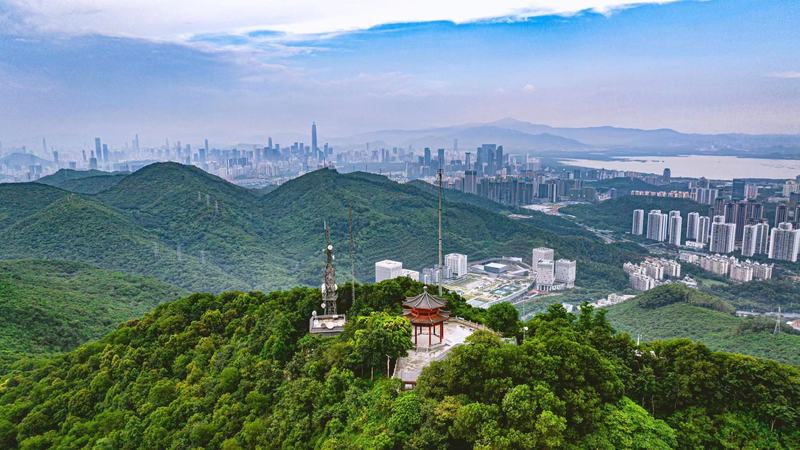
▲ Aerial view of Tanglang Mountain. Shenzhen Evening News reporter Ning Jiewen photo
Longzhumen-Chaguang Entrance: Man-made landscape gradually transits to natural landscape.
Not far from the back of the Dragon Ball Gate, a crisp and loud "morning call" came from the reporter’s ear. The reporter looked up and found that a group of birds with black spots on their faces and light gray were "hard" on the Ilex tree. Teacher Ye told the reporter that this is a black-faced noise, named after it likes singing and has a black spot on its cheek. There are clusters of small red fruits on the holly tree, which is a special favorite food for birds.
Walking to an altitude of 100 meters, the plants on both sides of the mountain road are already very rich. "Look, this is the kidney fern, also known as’ stone yellow skin’. Its root has a kidney-shaped ball, which has the function of nutrient storage, rich water content and thirst quenching effect." Teacher Liu said.
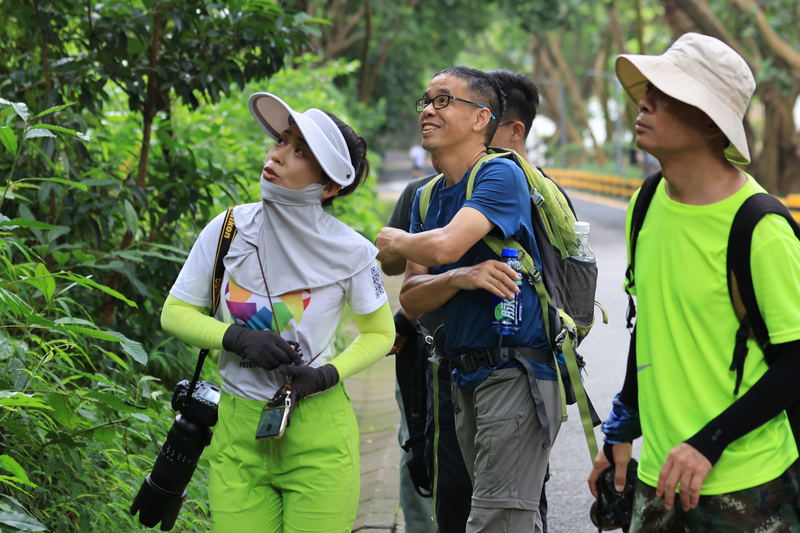
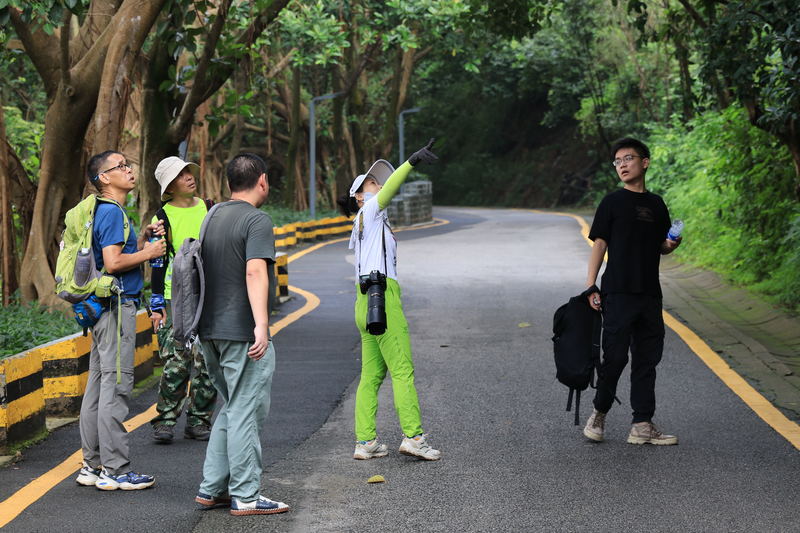
▲ The interview team interviewed along the way under the guidance of experts. Shenzhen Evening News reporter Chen Yushe
Two experts told reporters that there are two kinds of national first-class protected plants in Shenzhen, among which the hometown of Cycas Xianhu is Tanglang Mountain. It was named Cycas Xianhu because it was discovered and named by plant experts in Xianhu, but the only wild Cycas Xianhu population in Shenzhen is still in Tanglang Mountain. No wonder Tanglang Mountain enjoys a unique "Jianghu status" among plant lovers in Shenzhen.
On the stone platform beside the mountain, the reporter found a strange-looking "snail". Its body crawls slowly on the stone surface, and its shell seems to be cut off in half and covered on the body compared with the general snail shell. "This is a half slug, an interesting species between snails and slugs." Teacher Liu said.
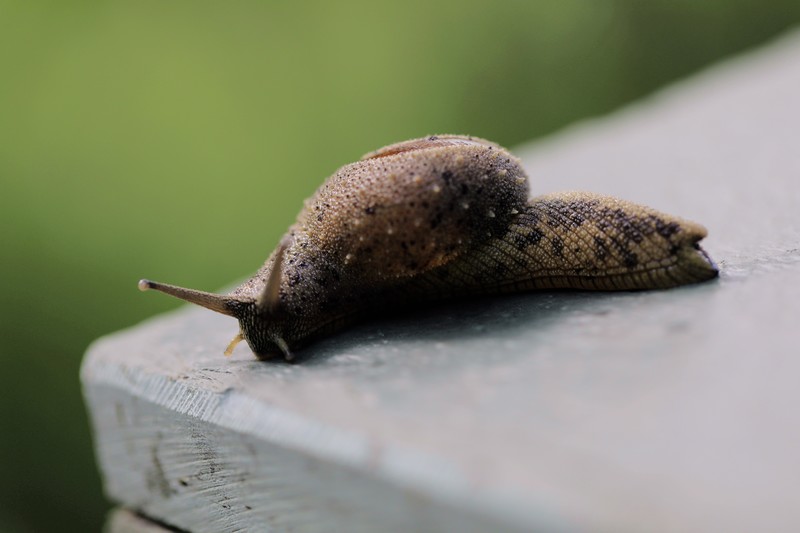
▲ Half a cockroach. Photo by Li Jingchuan
Not far away, a tall cone appeared in front of the reporter-this is a common native wild tree species in Shenzhen. At an altitude of 200 meters, protophytes such as ragweed leaves, Broussonetia papyrifera, Miscanthus pentaphyllum and Pu Shu gradually appeared. Most of the slopes are ferns with vigorous growth, including Pteris fournieri and Pteris australis. Pteris fournieri has feathery leaves and a sharp tail, which is very ornamental. The leaves of Dryopteris australis have a hairy touch. There is also Liriodendron chinense, which is called "Yajiaomu" by Guangdong people. It is also a native plant on Tanglang Mountain, named after the edge of its leaves is like a webbed duck’s feet. The common name of the beautiful lantana is "five-colored plum". A lantana is composed of many small flowers, with pink petals surrounding a cluster of bright yellow petals in the middle, which is the "restaurant" for butterflies and bees. On both sides of the road, there are three leaves on a branch, which is three bitter; It is Rhus chinensis with wings and a layer of salt frost when the fruit is ripe; There is also a kind of gardening flower, whose branches are born from the ground and covered with long and thin red leaves. According to Teacher Liu, this is a cockscomb bed, which is artificially "domesticated" and can be eaten by sunbirds. In addition, there are various plants such as Camellia oleifera, Wedelia chinensis, litsea cubeba, honey tree, Lygodium japonicum, water lily, Ficus crassifolia, white-backed leaves, Manjiujie, and pseudo-sweet beans. Under the guidance of experts, journalists are interested in learning how to identify them.
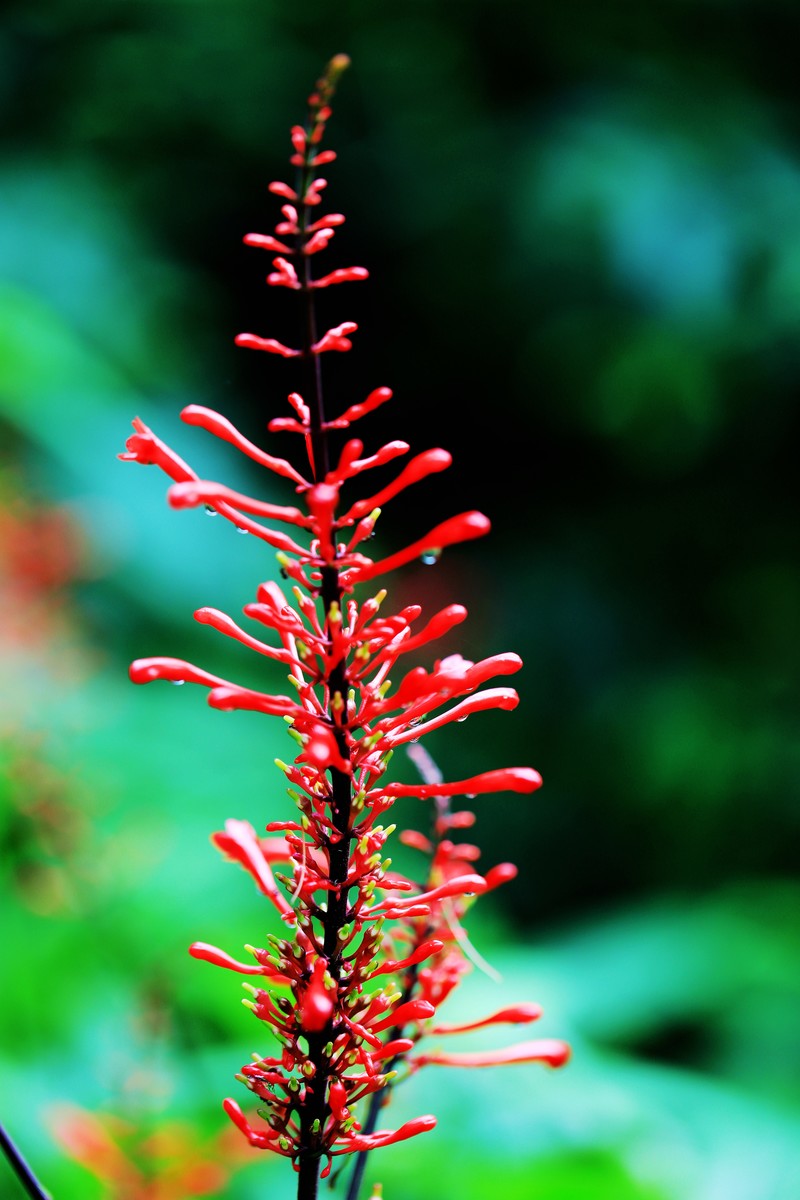
▲ Cocktail-crowned jazz bed. Photo by Li Jingchuan
Suddenly, a forked-tailed sunbird flew over the treetops, attracting everyone’s attention. The fork-tailed sunbird is petite, but cool in appearance. It has an ochre-red neck, pale green wings, and a head and tail that sparkle with sapphire blue like metal. But the most special thing is its two forked, slender and sharp tail feathers; Then, a few bright tones sounded on people’s heads. The reporter looked up and found a bird with the same slender body and a yellowish green color flying between the branches and leaves. "This is a dark green embroidered bird." Teacher Liu said. After careful observation, the reporter found that it really had a circle of white eyes, like exquisite embroidery.
Tea light entrance-Honghualing: Careful observation and harvesting of natural wild interest
After walking 3200 meters along Panshan Highway, you reach the Chaguang entrance. From the Chaguang entrance to the west is a 3180-meter-long demonstration hiking trail in Shenzhen, which is the road from Tanglang Mountain to Zijian Garden.
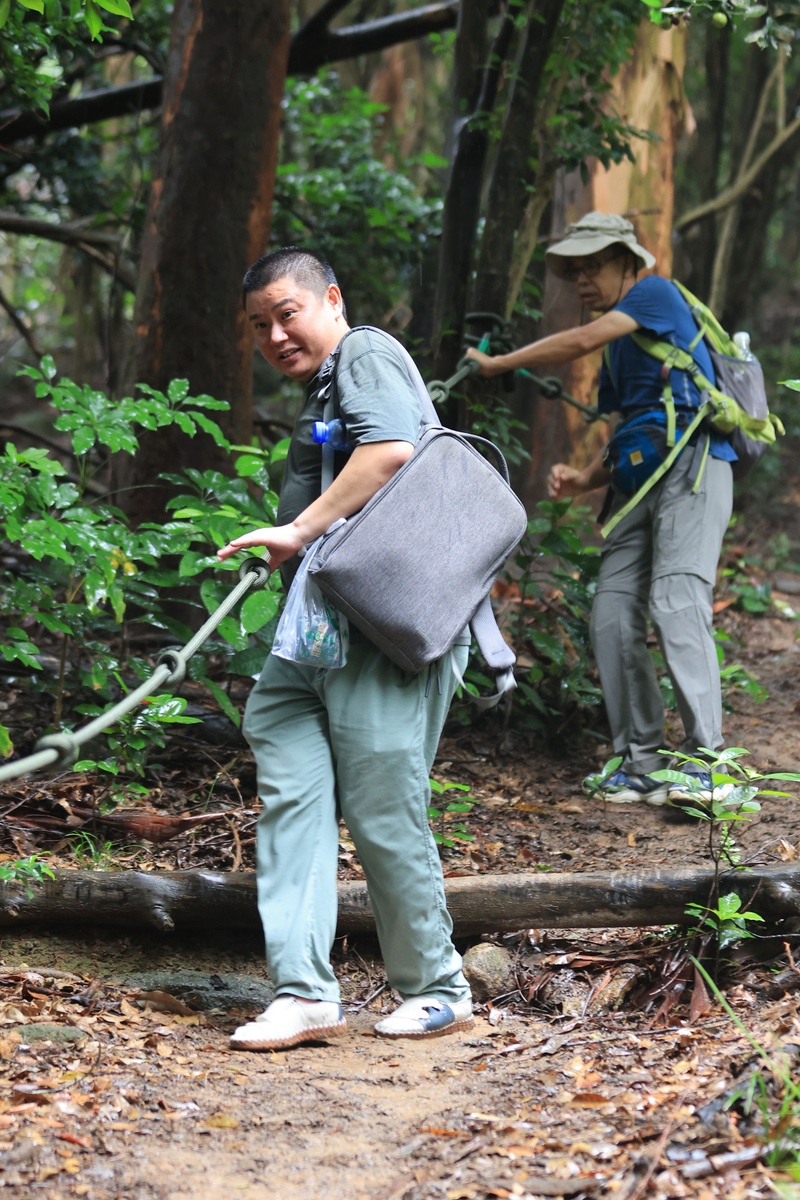
▲ The interview group marched on the mountain road. Shenzhen Evening News reporter Chen Yushe
From here, the interview team walked into the real mountain path. As it has just rained, the mountain road is very muddy, so you need to be very careful when walking. But the air is very fresh in the humid forest. Along the way through the litchi forest, there are beautiful purple jade plates, elegant and fragrant lotus flowers, Sapium sativum, catnip, Capparis spinosa, Ficus crassifolia and other plants. Among them, there are many lavender leaves climbing on the branches of the catnip, and the leaves have short and soft fluff, which is very beautiful. The leaves grow to the top of the branches and gradually become smaller, forming a furry "pointed tail" at the top of the branches.
On this road, the interview group met a father and son. They also came to "try early" after learning that Shanhai Corridor was officially opened. My father is a foreigner who only speaks English, while my 9-year-old son is fluent in both Chinese and English, punching cards against the map all the way, full of interest. They always call it Nature, like Wilds, and often hike the peaks in Shenzhen … After talking with them, the reporter learned that his son’s name is D.J., and he climbs mountains every day during holidays, so he can accurately identify many wild plants.
Continue to walk forward, and you will come to a flat mountain, which is the "valley wild interest" section of this hiking trail. There is no place on both sides of the road that can block the sun, but if you carefully observe the vegetation around you, you can find all kinds of insects hidden in the trees and branches. On this road, the interview team found a green Chinese broadsword beetle, which is almost integrated with grass leaves. If you don’t pay special attention, it is difficult to see it. With this experience, the interview team observed it more carefully, and sure enough, it soon discovered a Chinese broadsword gladiator with a light yellow-brown body, which played the role of "dead branches and leaves" in the grass. "Look at the mantis on Tanglang Mountain, we are in glad you came!" Teacher Liu joked. On a branch not far away, a dragonfly came flapping its wings, and its thin, transparent, vibrating golden brown wings and golden yellow back shone in the sun, which made people feel quite shocked. Teacher Liu told the reporter that this is a female Xiao Brown duckling.

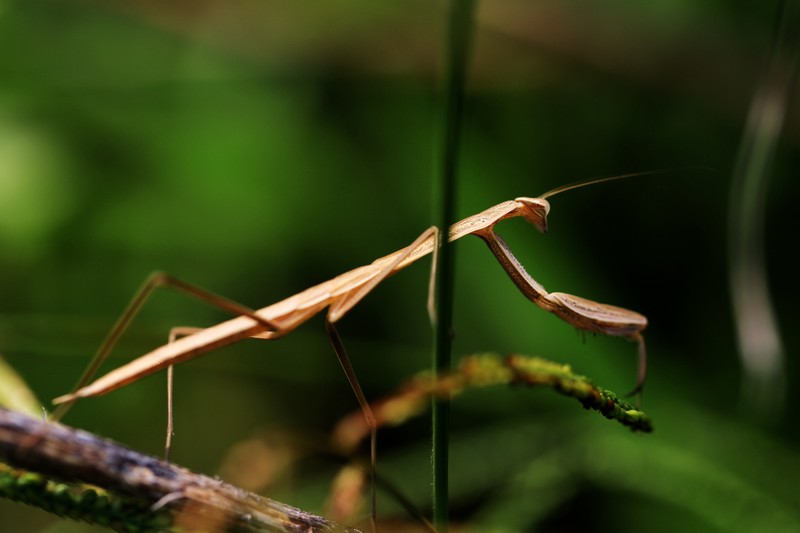
▲ Chinese knife. Photo by Li Jingchuan
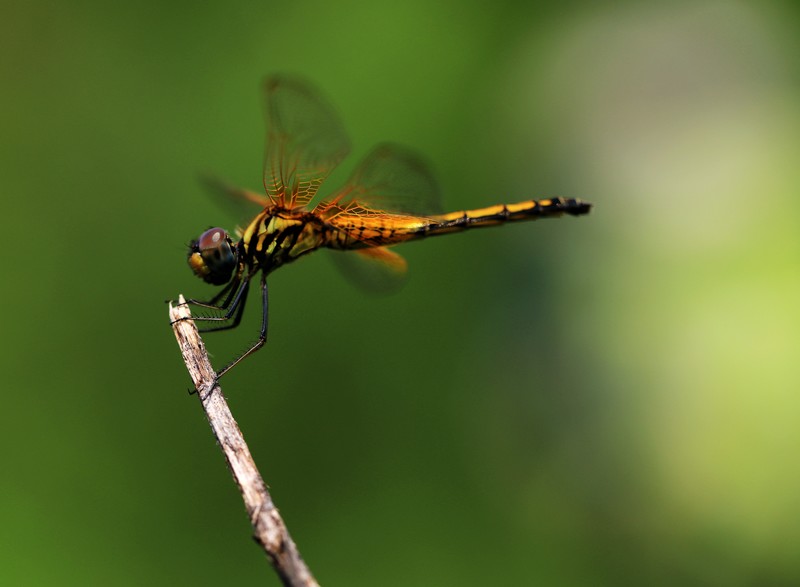
▲ Xiao Brown duckling. Photo by Li Jingchuan
On this section of the road, you can also see various insects such as Papilio microphylla with eye-shaped black spots on its gray wings, Gray duckling with black tail, Hook-winged Eye Nymphalia with hooked wing tips, stinkbug with hemp skin, wart locust, Dornier, etc. It is particularly important to note that there are some small bumps in the grass along the way, so visitors should be more careful when they see them-that is the nest of red imported fire ants. The interview team found that most of the red imported fire ants’ nests were planted with flags to remind them to take precautions, but experts still reminded everyone not to provoke these invasive species and to do personal protection.
Cross this flat land and enter the dense litchi forest in Honghualing. Interestingly, the interview team found an exquisite introduction card of skink (a lizard) on a stone by the roadside. Just as everyone stopped to read, they suddenly found a skink lying quietly beside the sign "presenting himself". "It’s sunbathing." Teacher Ye lowered his voice and told everyone. It turns out that skink, also known as a "hermit under the fallen leaves", likes to move in wet crevices or fallen leaves. Its alertness is very high. Once it senses the movement around it, it will run away quickly and break its tail to survive if necessary. Subsequently, the interview team found four skinks on this road, which shows that this area is their favorite habitat.
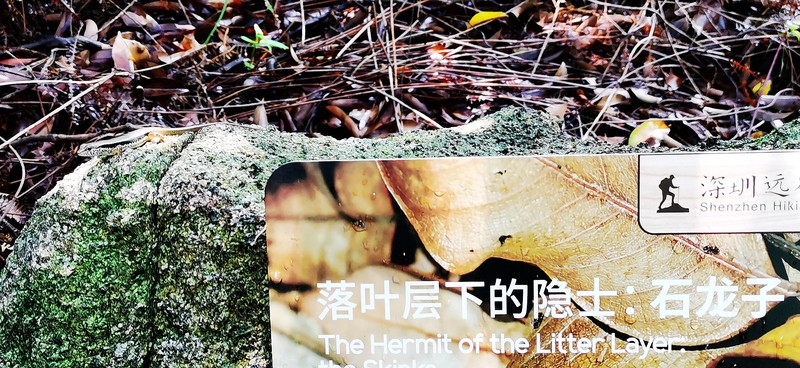
▲ Shilongzi (upper left) who "shows up". Photo by Li Jingchuan
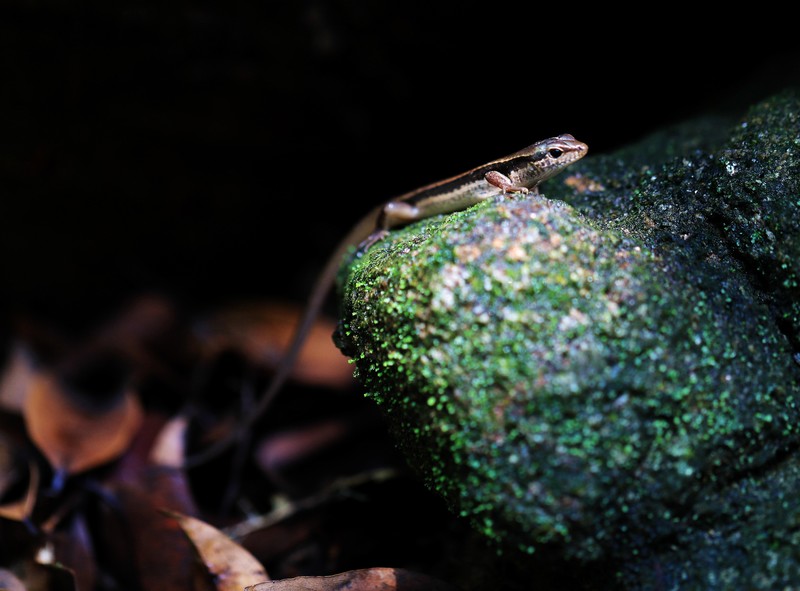
▲ skink. Photo by Li Jingchuan
Although Honghualing is only a hill, its good vegetation and natural habitat still attract many rare wild animals and plants in urban areas. From time to time, the chirping of birds of prey such as kites and kites came from the sky, which proved that this area was their main "hunting ground". In the dense forest, if you pay attention to the observation, you can see the unique Okumo in South China-the bride of Banluo.
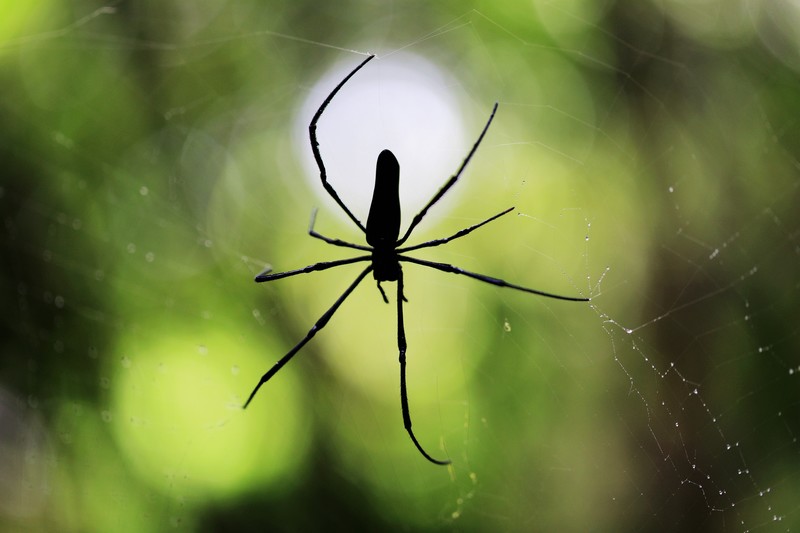
▲ Spotted bride. Photo by Li Jingchuan
"Tanglang Mountain is like a vivid evolutionary tree. From gymnosperms represented by Cycas Xianhu to primate high-grade mammals represented by macaques, it fully proves the law of biological evolution: from aquatic to terrestrial, from low to high, from simple to complex." After coming down from Honghualing Mountain, Teacher Ye concluded.
Ahead is Dashahe Park, where what wonderful things are waiting for us to discover?
Expert comments
Shanhaijing in the downtown area of the city
Shanhai Corridor, with a total length of about 13 kilometers, starts from Tanglang Mountain, passes through Honghualing, leaves Zijian Garden, goes down the Dasha River and reaches Shenzhen Bay directly.
On this ecological corridor, the first thing we walked through was a mountain with granite as the main body: Wangtianluo-Tanglangfeng-Honghualing.
In the hilly region from east to west, the typical subtropical monsoon climate environment and the three-dimensional plant community composed of secondary forests, shrubs and artificial forests have bred rich biological resources here.
There are more than 600 species of wild vascular plants here. The guide cards along the way will remind us of the appearance of animals such as macaques, leopard cats, wild boars and pythons. Birds and insects in the forest will slow you down, and at night, it will be an unexpected world.
Walking in Tanglang Mountain is like walking through the evolutionary tree of biodiversity.
The forest of Tanglang Mountain constitutes the lung of the downtown area of Shenzhen, and the abundant water creates the kidney of the downtown area. Five small rivers flowing down the valley: Jishangou, Laohuyan River, Qingquanqu, Tanglang River and Longjing River, are rare natural runoff in the downtown area, and all of them eventually flow into Dasha River.
Longjing River is formed by the confluence of the left and right branches. The source of the river and the lush forest are the paradise of Cycas fairyland, spiny black and golden retriever dogs. The gentle place is the habitat of dragonflies and fireflies; Shallow and deep pools, a large number of aquatic organisms are multiplying; The ups and downs are waterfalls splashed with water mist.
The quiet valley where Tanglang River flows, the quiet habitat breeds the dense ferns along the river bank, and the clear and pollution-free aquatic environment breeds the population of the national second-class protected plant, the water fern.
Qingquanqu is a geomantic treasure-house for local villagers, where trees are flourishing and valleys are winding. Clematis pubescens with white flowers, Impatiens in Hong Kong with yellow flowers, and Youjute with white flowers, which are surrounded by birds, outline comfortable and bright natural colors among the evergreen trees.
Laohuyan River, named after the legend of the South China tiger, is the distribution place of the largest population of Cycas in the wild Xianhu Lake. In the gentle valley, a series of livelihood projects are being built, which will be a harmonious community with clear rivers and green banks, beautiful scenery and loud books.
Jishangou is a confluence of three tributaries, with blooming flowers, evergreen pines and cypresses, and intact mountains and rivers. Seven Dongjiang column martyrs buried under the Changyuan Yu Revolutionary Martyrs Monument witnessed the beautiful new era they pursued and guarded with their lives.
Five tributaries, with the pulse of life, local flavor and fragrance of the four seasons, flow into Dasha River, Shenzhen Bay, Lingdingyang and South China Sea and Pacific Ocean in different ways.

▲ Ye Jianhua. Shenzhen Evening News reporter Chen Yushe
Expert introduction
Ye Jianhua, member of china wildlife conservation association, public lecturer of environmental education in China of Cornell University and WWF, member of Shenzhen Wildlife Conservation Association and member of Shenzhen Botanical Society.
strategy
Enter from the entrance of Longzhumen, Longzhu Sixth Road, and walk for about 100 meters. There is a fork. In the middle of the night, the reporter chose to walk along Panshan Highway (due north) for 400 meters (it takes 8 minutes and the steps are 720) to reach Tanglangshan Country Park Management Office (there is a public toilet).
Panshan Highway walks 3,200 meters to the Chaguang entrance (it takes 1 hour and 06 minutes, and the steps are 5,300). There are two public toilets in the middle, and each toilet is equipped with a vending machine, which mainly provides drinks and snacks. Passing through a rest pavilion and Qingyun Terrace.
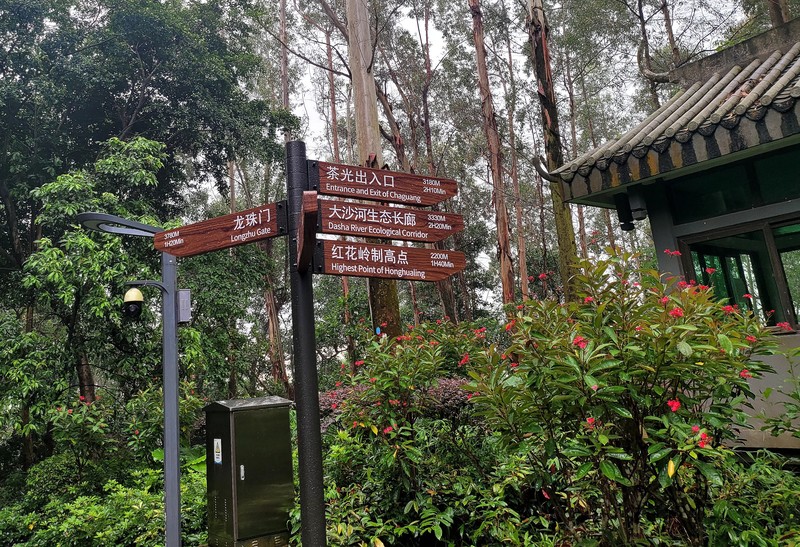
▲ After walking 3200 meters along Panshan Highway from Longzhumen, you can see the road sign in the direction of Chaguang entrance and exit. Shenzhen Evening News reporter Luo Ming photo
Go 1000 meters to the north of the Chaguang entrance and you can reach the Jimu Pavilion in Tanglang Mountain, passing through the Li Pavilion, Taoran Pavilion, Daguan Pavilion, Qicui Pavilion and the 100-foot ladder. Among them, there are often macaques in the Li Pavilion and Taoranting. Because wild macaques are aggressive, tourists should keep a certain distance from them. Located at the highest point of the mountain, Jimu Pavilion overlooks Hong Kong from a distance and Shenzhen from a distance, giving a panoramic view of the beautiful scenery of Shenzhen with mountains and seas.
Go west from the Chaguang entrance and exit and enter the 3180-meter-long Shenzhen demonstration hiking trail. If you walk less than 50 meters along the hand-made trail, you will pass through a steep mountain road with a length of 400 meters. In order to prevent citizens from slipping here, a safety rope is set. After crossing a litchi forest, the first information sign will appear. Continue to walk along the litchi forest in the direction of tea light, and you will pass a wooden bridge about 2 meters long. Walk another 300 meters, and a second information sign will appear. At this time, a fork will appear. Walk 1300 meters south, it will take 40 minutes to reach Xinwu Village and Tanglangshan Nature Education Center, and it is 2250 meters away from the entrance and exit of Chaguang. Reporter’s feeling: this 1000-meter mountain road is steep, easy to fall in rainy days, with more mosquitoes and lush vegetation on both sides of the mountain road.
Walk along the direction of tea light for another 1200 meters and see the third information sign. 30 meters away is Honghualing (north and south) scenic spot. In this 1200-meter journey, we first pass through a mountainous area with flat terrain, and there is no place on both sides of the road to block the sun. But this short section is the habitat of the kite, snake carving, mimosa, red-eared snipe, black-eyed toad and other animals and plants.
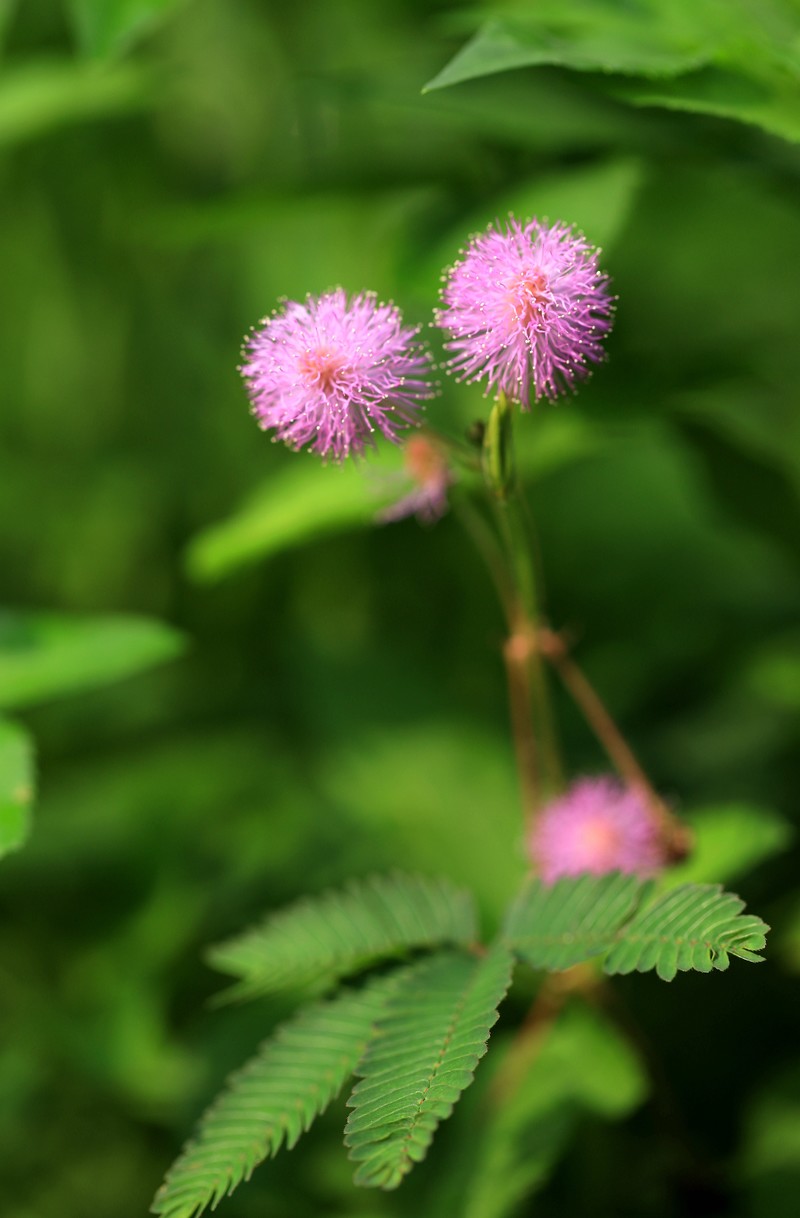
▲ mimosa. Photo by Li Jingchuan
After crossing the flat land, you will enter the dense forest, where there are stone kerbs and barges, and there are plants and animals such as skinks and capers.
After coming out of the dense forest, you will pass through a litchi forest. When walking 460 meters down the left side of the mountain road, the fourth information sign appeared, indicating that there are 520 meters left from the entrance of Chaguang. When we arrive at the entrance and exit of Chaguang Zijian Garden, there will be a large banana forest. Therefore, the official divides this demonstration hiking trail into three sections: "Lilin Banana Shadow", "Valley Wild Interest" and "Deep Forest Exploration".
A total of 18,000 steps have been taken after completing the Tanglangshan section of Shanhai Corridor. Reporter’s feeling: There are no garbage bins and water supply points from the entrance to Chaguang to Honghualing Mountain. Citizens should prepare enough water when walking and consciously take the garbage down the mountain.

▲ Hand-painted road map of the late-night interview group walking in Tanglangshan section of Shanhai Corridor. Cartography: Li Minghe
summary
Tanglangshan Park is rich in animal and plant resources, featuring natural ecology. Here, you can enjoy the national key protected plants, such as Cycas Xianhu, Alsophila spinulosa, Aquilaria sinensis, Golden Retriever, etc. Wild animals such as leopard cat, macaque, wild boar, kite, snake carving, thrush, kingfisher and so on add vitality to the silent forest. Among them, butterflies and macaques are the most distinctive, with 31 species of butterflies belonging to 8 families, such as Papilio maculata, Papilio Paris and Papilio Jade.
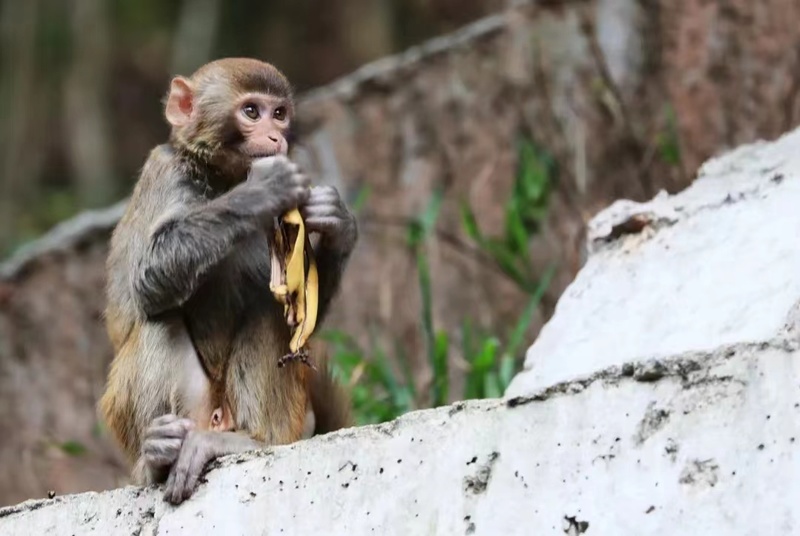
▲ Macaques on Tanglang Mountain. Photo by Luo Ming
Safety tips
Prevent snakes and red imported fire ants. Travel together, don’t "date" with wild boar alone.
Shenzhen Evening News reporter Li Jingchuan Li Minghe Luo Ming/Wen Shenzhen Evening News reporter Chen Yu Li Jingchuan Luo Ming/map